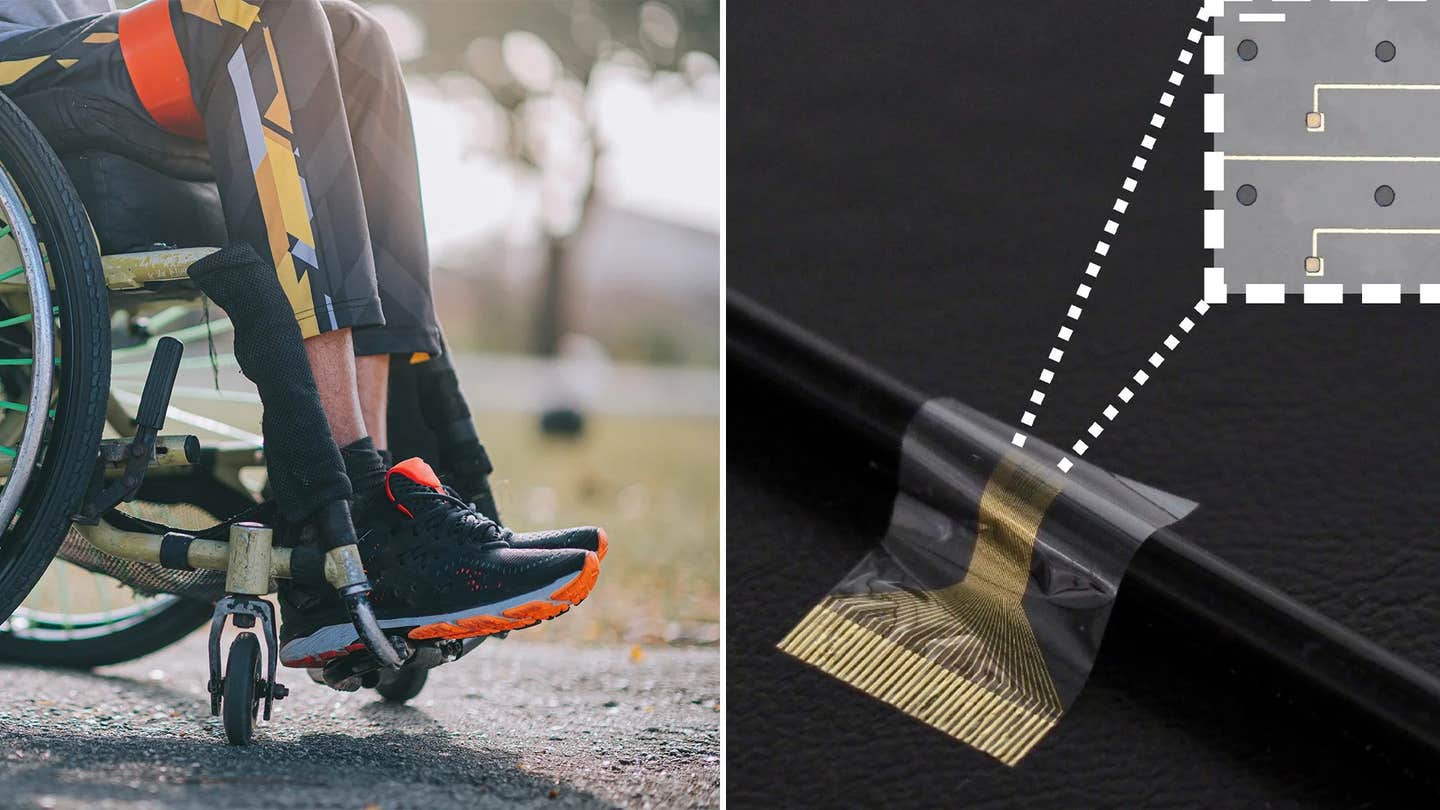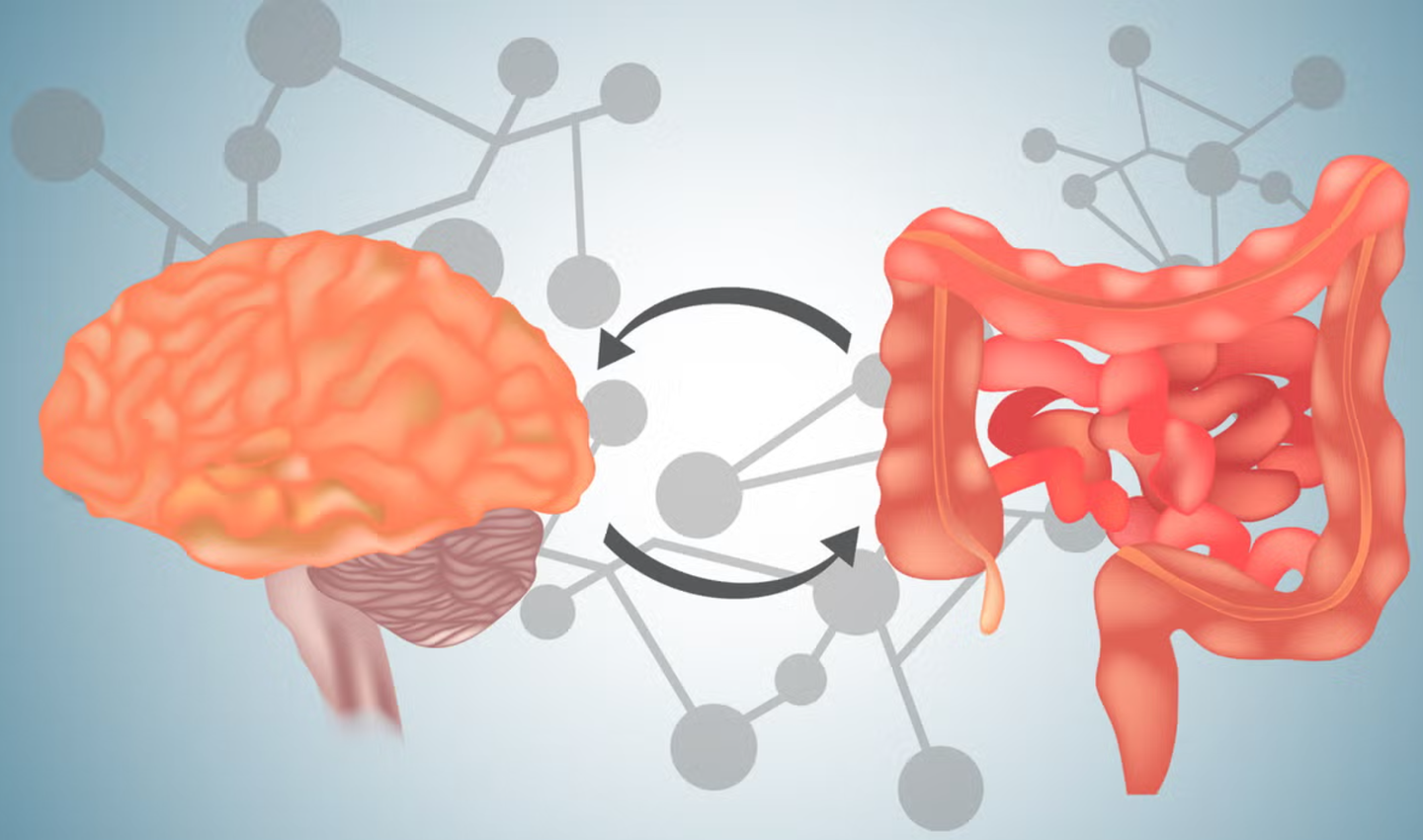Groundbreaking neural implant could restore function in paralyzed limbs
Researchers have developed a new type of neural implant that could potentially restore lost arm and leg function to amputees.

[Apr. 6, 2023: JD Shavit, The Brighter Side of News]
Researchers have developed a new type of neural implant that could potentially restore limb function to amputees. (CREDIT: Creative Commons)
Cambridge researchers have developed a new type of neural implant that could potentially restore limb function to amputees and others who have lost the use of their arms or legs. The device uses a combination of flexible electronics and human stem cells to improve the connection between the brain and paralysed limbs.
By combining two advanced therapies for nerve regeneration – cell therapy and bioelectronics – into a single device, the researchers say they can improve functionality and sensitivity, and overcome the shortcomings of previous attempts at using neural implants to restore limb function. The results of the study, carried out in rats, were published in the journal Science Advances.
The inability of neurons to regenerate and rebuild disrupted neural circuits is a huge challenge when attempting to reverse injuries that result in the loss of a limb or the loss of function of a limb. In the case of amputations, all the signals in the nervous system are still present, even though the physical limb is gone. Extracting the information from the nerve and getting it to the limb so that function is restored is the main challenge in integrating artificial limbs or restoring function to arms or legs.
Previous attempts at using neural implants to restore limb function have mostly failed, as scar tissue tends to form around the electrodes over time, impeding the connection between the device and the nerve.
Related Stories
To overcome this, the Cambridge researchers sandwiched a layer of muscle cells reprogrammed from stem cells between the electrodes and the living tissue. This approach prevented the formation of scar tissue, and the cells survived on the electrode for the duration of the 28-day experiment.
The researchers implanted the biocompatible flexible electronic device, which is thin enough to be attached to the end of a nerve, into the paralysed forearm of rats. The stem cells, which had been transformed into muscle cells prior to implantation, integrated with the nerves in the rat’s forearm. While the rats did not have movement restored to their forearms, the device was able to pick up the signals from the brain that control movement. If connected to the rest of the nerve or a prosthetic limb, the device could help restore movement.
The researchers say that their approach has multiple advantages over other attempts to restore function in amputees. In addition to its easier integration and long-term stability, the device is small enough that its implantation would only require keyhole surgery. Other neural interfacing technologies for the restoration of function in amputees require complex patient-specific interpretations of cortical activity to be associated with muscle movements, while the Cambridge-developed device is a highly scalable solution since it uses ‘off the shelf’ cells.
An in vivo biohybrid device design customized for the peripheral nervous system. Devices consist of two PaC, parylene-C, layers containing Au tracks and PEDOT:PSS microelectrodes. Au tracks lead to connector pads to which a connecting flexible cable can be bonded. The parylene-C layers contain holes to permit fluid flow and cell migration across the device. Scale bar, 60 μm. (CREDIT: Science Advances)
The cell layer also improved the function of the device, by improving resolution and allowing long-term monitoring inside a living organism. The cells survived through the 28-day experiment: the first time that cells have been shown to survive an extended experiment of this kind.
The researchers say that their device could also be used to control prosthetic limbs by interacting with specific axons responsible for motor control. This potential application of the technology could revolutionise the way we interact with technology, says co-first author Amy Rochford from the Department of Engineering. By combining living human cells with bioelectronic materials, they have created a system that can communicate with the brain in a more natural and intuitive way, opening up new possibilities for prosthetics, brain-machine interfaces, and even enhancing cognitive abilities.
A bright-field image showing human iPSC-derived myocytes at day 8 of culture. Scale bars, 465 μm and 230 μm. (CREDIT: Science Advances)
“This technology represents an exciting new approach to neural implants, which we hope will unlock new treatments for patients in need,” said co-first author Dr Alejandro Carnicer-Lombarte, also from the Department of Engineering.
“This was a high-risk endeavour, and I’m so pleased that it worked,” said Professor George Malliaras from Cambridge’s Department of Engineering, who co-led the research.
While extensive research and testing will be needed before the device can be used in humans, the researchers are optimistic about the potential of this new technology to help restore limb function to those who have lost it. The next step for the team is to conduct further experiments on larger animals, such as pigs, which will provide a more accurate representation of how the technology might work in humans.
Experimental timeline showing the fabrication and implantation of the biohybrid device from an in vitro cell culture step into an animal model. Cells are seeded onto the flexible biohybrid devices at day 0. After 48 hours (day 2), the differentiation process is initiated. At day 8, myotubes are mature; therefore, between day 8 and 10 is the optimal timing for the implantation of the biohybrid devices into a peripheral nerve rat model. Devices are then implanted for a period of 4 weeks. (CREDIT: Science Advances)
The team also plans to explore other potential applications for the technology, such as using it to develop brain-machine interfaces that could be used to control prosthetic limbs or other devices.
"The potential applications for this technology are really exciting," said Dr. Barone. "We're still a long way from seeing this in clinical use, but we're optimistic about the possibilities."
Other experts in the field have praised the team's work, saying that it represents an important step forward in the development of neural implants for the restoration of limb function.
Electrode impedance at 1000 Hz before and after cell addition over a 4-week period postimplantation. PaC, parylene C; Au, gold; dox, doxycycline; RA, retinoic acid; NMJs, neuromuscular junctions; PDMS, polydimethylsiloxane. (CREDIT: Science Advances)
"This is a very exciting development," said Dr. Kevin Warwick, a cybernetics expert and professor at Coventry University. "The ability to use stem cells to prevent scar tissue formation around neural implants is a significant breakthrough, and could help to overcome one of the biggest obstacles to the development of effective neural prostheses."
Dr. Warwick added that while much more research is needed before the technology can be used in humans, the team's work is a crucial step forward in the field of neural engineering.
Overall, the development of this new neural implant technology represents a significant breakthrough in the field of neuroprosthetics, and has the potential to help restore limb function to countless individuals who have lost it. While there is still much more work to be done before the technology can be used in humans, the results of the team's study are a promising sign of what may be possible in the near future.
Note: Materials provided above by The Brighter Side of News. Content may be edited for style and length.
Like these kind of feel good stories? Get the Brighter Side of News' newsletter.



